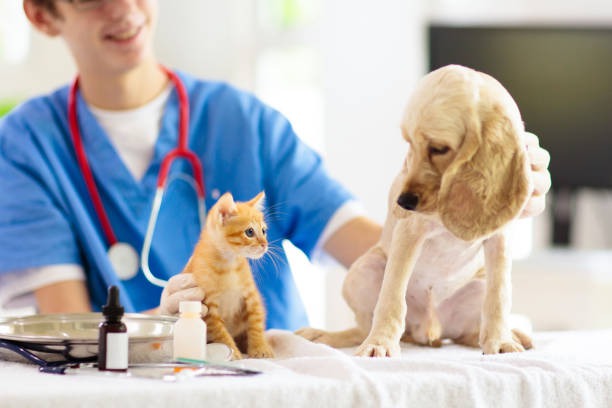We all adore our pets and strive to ensure their well-being. However, situations sometimes arise that require our furry friends’ immediate medical attention. Understanding these circumstances can help us act swiftly, potentially saving their lives. So, why do some pets require emergency procedures? Let’s look into the common scenarios and insights on pet emergencies.
Understanding Pet Emergencies
Pet emergencies often come out of the blue and can be incredibly stressful for both the pet and the owner. Identifying a genuine emergency is crucial for timely intervention. Recognizing the signs and understanding when to seek immediate help can make a world of difference.
1. Accidents and Trauma
One of the most common reasons pets need emergency procedures is accidents and trauma. Whether it’s a car accident, a fall, or an unexpected injury, trauma can lead to broken bones, internal bleeding, or severe wounds.
-
Car Accidents: Injuries from car accidents can range from minor bruises to life-threatening conditions.
-
Falls: Pets, especially cats, are prone to falls that can cause fractures or internal injuries.
-
Fighting: Scraps and fights with other animals can result in deep wounds, infections, or worse.
2. Poisoning and Toxic Ingestion
Pets are curious by nature, which sometimes leads them to ingest toxic substances. It may include household chemicals, plants, or spoiled food. Swift actions are necessary when poisoning is suspected.
-
Common Toxins: Household cleaners, certain plants, human medications, and chocolate can be toxic.
-
Symptoms: Vomiting, diarrhea, lethargy, and seizures are common signs of poisoning.
-
Immediate Action: If you suspect your pet has ingested something harmful, seek emergency help immediately.
3. Severe Allergic Reactions
Just like humans, pets can also have severe and potentially life-threatening allergic reactions. Insect bites, foods, medications, or environmental factors can trigger these reactions.
-
Signs of Allergic Reactions: Swelling, hives, difficulty breathing, and excessive itching.
-
Common Triggers: Bee stings, certain foods, medications, and environmental allergens like pollen.
-
Actions to Take: If your pet displays severe allergic reaction symptoms, rush them to the nearest emergency service.
4. Breathing Difficulties
Any issues affecting your pet’s ability to breathe require immediate attention. Breathing problems can stem from various causes, including heart disease, respiratory infections, or foreign objects lodged in the airway.
-
Common Causes: Asthma, heart disease, lung infections, or foreign objects.
-
Signs to Watch: Rapid breathing, open-mouth breathing in cats, coughing, or choking sounds.
-
Emergency Response: Difficulty breathing is a serious issue and warrants an emergency visit to the vet.
5. Abdominal Pain and Bloating
Abdominal pain and bloating can signify severe conditions like gastric dilatation-volvulus (GDV) in dogs, which can be fatal if not treated promptly. Other causes may include pancreatitis or intestinal obstructions.
-
GDV in Dogs: A condition where the stomach twists, cutting off blood supply, and requires immediate surgery.
-
Signs to Notice: restlessness, swollen abdomen, unproductive vomiting, and lethargy are red flags.
-
Quick Action: If you observe your pet exhibiting these symptoms, it’s crucial to rush them to an emergency vet.
Emergencies sometimes demand specialized testing. For instance, pet lab services can aid in quickly diagnosing underlying issues through blood tests, X-rays, or ultrasounds, ensuring the pet receives the appropriate treatment. With advancements in veterinary medicine, diagnosing and treating emergencies has become more precise and effective.
6. Neurological Issues
Seizures, sudden incoordination, or disorientation can stem from neurological issues that require rapid assessment and intervention. These symptoms can be due to epileptic conditions, brain injuries, or toxin exposure.
-
Seizures: These can be brief or prolonged, and recurrent seizures need immediate evaluation.
-
Head Injuries: Trauma to the head can lead to bleeding or swelling in the brain.
-
Actions to Take: Any sudden neurological signs should prompt an immediate veterinary visit.
Consulting a veterinarian in San Diego or in your local area with expertise in handling neurological emergencies can make a significant difference in your pet’s recovery. Timely intervention can mitigate long-term effects and improve outcomes.
7. Difficulty Urinating or Defecating
Problems with urination or defecation can be serious, potentially indicating urinary obstructions, kidney issues, or intestinal blockages. Male cats are particularly prone to urinary blockages, which can be life-threatening.
-
Urinary Obstruction: This can be more common in male cats and needs immediate treatment.
-
Constipation: Chronic constipation can lead to more severe health issues.
-
Signs: Straining, vocalizing during urination/defecation, or producing no output warrants urgent care.
8. Labor Complications
Breeding pets can sometimes encounter complications during labor. Difficulty in giving birth, known as dystocia, can endanger both the mother and the offspring.
-
Signs of Dystocia: Prolonged labor, straining without delivering, discharge without birth.
-
Common Causes: Large size of puppies/kittens, improper positioning, or uterine exhaustion.
-
Immediate Help: If labor looks problematic, contact your vet right away.
9. Eye Injuries
Eye injuries can occur due to fights, foreign objects, or accidents and can progress quickly to severe infections or loss of vision.
-
Symptoms: Squinting, redness, discharge, or cloudiness in the eyes.
-
Immediate Steps: Prevent your pet from rubbing the eye and seek emergency care.
Pets prone to eye injuries require prompt treatment. An animal emergency clinic is equipped to handle such situations, offering the necessary diagnostics and care to address the injury effectively.
10. Uncontrolled Bleeding
Severe bleeding, whether internal or external, can be life-threatening. Pets may suffer from bleeding due to trauma, surgical complications, or clotting disorders.
-
Identifying Internal Bleeding: Symptoms include weakness, pale gums, and abdominal swelling.
-
Managing External Bleeding: Apply direct pressure and seek immediate professional help.
Final Thoughts
Pet emergencies are undoubtedly distressing, but knowing why some pets require emergency procedures can help owners respond more effectively. Whether it’s an accident, poisoning, allergic reaction, or another critical situation, immediate intervention is vital. Always keep your veterinarian’s contact information handy and know the location of the nearest emergency animal clinic. By staying informed and prepared, you can act swiftly and confidently to protect your beloved pet’s health.

